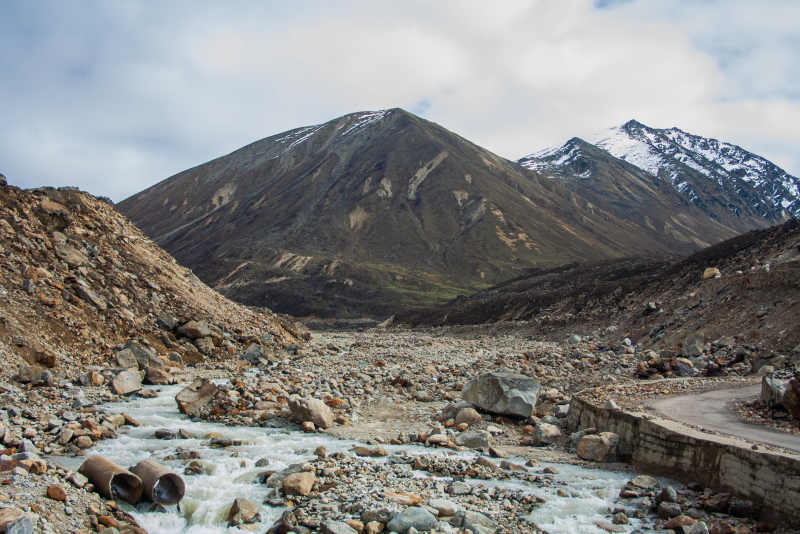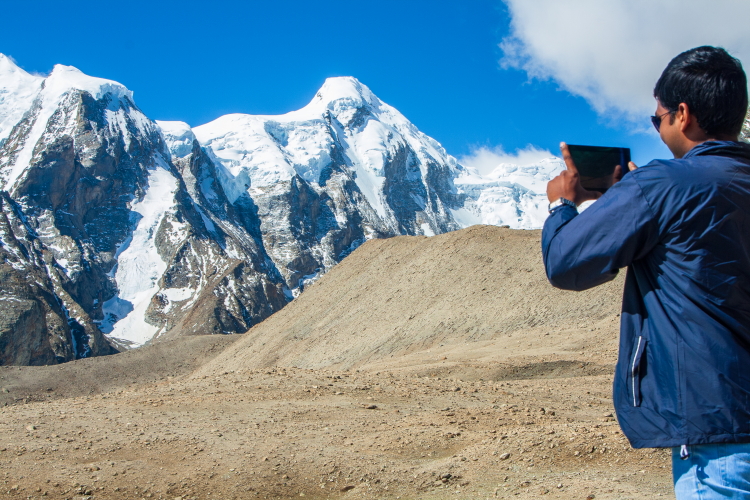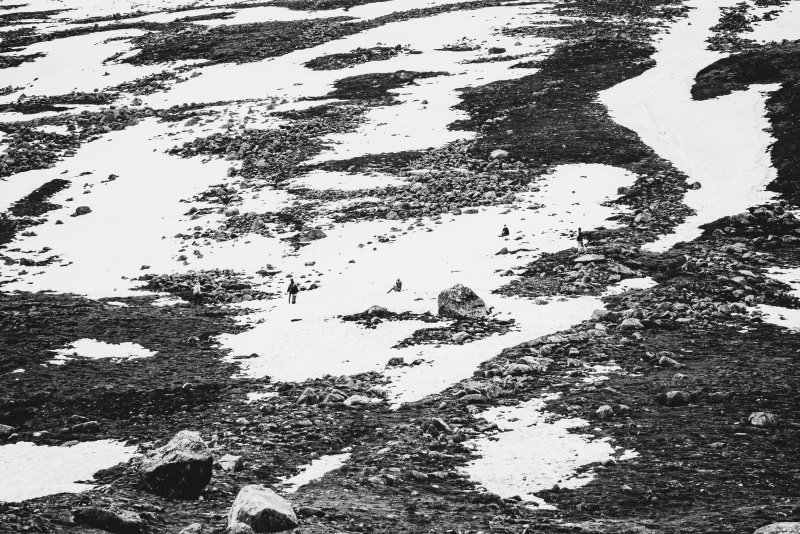What is high altitude sickness or acute mountain sickness (AMS)?
An illness related to the ascent to high altitude. Anyone can experience symptoms of altitude sickness, also known as acute mountain sickness (AMS), while ascending to high altitude very quickly. For some people, visiting a high altitude place can cause AMS symptoms.
What is a high altitude?
Any altitude pf 8000 feet and above is called high altitude.
- High altitude: 8,000 to 12,000 feet above sea level.
- Very high altitude: 12,000 to 18,000 feet.
- Extremely high altitude: 18,000+ feet.
Why does high altitude sickness occur?
High Altitude sickness occurs due to low oxygen pressure in the air, which causes oxygen deficiency in our body. Usually, the body can adjust to lower oxygen pressure until certain altitudes if adequate time is allowed for acclimatization, which means adjusting our system to the change in environment. But if that time is not allowed due to quick ascent to high altitude, different health problems may arise, known as high altitude sickness.

What are the types of high altitude sickness (according to severity)?
High altitude sickness can be broadly categorised in three types –
- mild
- moderate
- severe
Acute mountain sickness (AMS) or high altitude illness starts within a few hours of ascending to a high altitude. Usually starts with headache, followed by other symptoms like loss of appetite, nausea, vomiting, disturbed sleep, fatigue and dizziness. Acute mountain sickness can progress to a more severe form in a few travellers.
Severe high altitude sickness includes two classical life-threatening illness – high altitude pulmonary edema (HAPE) and high altitude cerebral edema (HACE)
What are the symptoms related to high altitude sickness or acute mountain sickness?
A wide array of symptoms can occur in high altitude sickness. Nausea and lightheadedness are the most frequently encountered in high altitudes. Usually, these symptoms subside in 24-48 hours or may aggravate towards more severe symptoms which needs urgent medical treatment.
Symptoms of mild high altitude sickness
- Nausea
- Mild headache or lightheadedness
- Dizziness
- Fatigue and loss of energy
- Shortness of breath
- Loss of appetite
- Sleep-related problems
Symptoms of moderate degree high altitude sickness
- Worsening of fatigue. weakness
- Difficulty walking and coordination problems
- Shortness of breath during activities
- Severe headache
- Vomiting
- Tightness in chest and chest congestion
Symptoms of severe altitude sickness
- Shortness of breath at rest
- Inability to walk
- Confusion
- Symptoms of High Altitude Pulmonary Edema (HAPE) and High Altitude Cerebral Edema (HACE)
| Symptoms of HAPE | Symptoms of HACE |
| 1. Cyanosis (bluish discolouration of nails, lips, tongue and skin) 2. Confusion and inappropriate behaviour 3. Shortness of breath at rest 4. Tightness of chest 5. Extreme fatigue and weakness 6. Feeling of suffocation 7. Persistent cough with pinkish-white frothy sputum | 1. Severe headache 2. Loss of coordination and fall while walking 3. Weakness in limbs 4. Disorientation, hallucinations, memory loss 5. Psychotic behaviour (violent/aggressive behaviour) 6. Coma |

Who can develop high altitude sickness?
Anyone can develop high altitude sickness, regardless of how fir young and healthy he/she is. A few things increase the likelihood of suffering from high altitude sickness: the altitude of your location, how quickly you gained that altitude, the number of physical activities you do there, at what altitude you are sleeping, etc.
Few physical conditions and pre-existing diseases increases the possibility of getting affected by high altitude sickness, They are –
- Extreme of ages
- Smoker
- Diabetes
- Pre-existing lung diseases
- Pre-existing heart disease
- Anaemia
- h/o suffering from AMS
How to diagnose high altitude sickness?
The diagnosis of high altitude sickness is purely based on symptoms. Although subjective the way the patient described his/her symptoms leads to its diagnosis and severity assessment. The symptom progression history given by fellow traveller is also crucial for diagnosis.
A very straightforward and common grading system for diagnosing AMS is the Lake Louise Self Assessment Questionnaire. A headache and a score of ≥ 3 indicates a diagnosis of AMS.
Lake Louise Self Assessment Questionnaire
| Headache | None (0) to incapacitating (3) |
| Gastrointestinal symptoms | None (0), poor appetite or nausea (1), moderate nausea or vomiting (2), incapacitating severe nausea or vomiting (3) |
| Fatigue/Weakness | None (0) to severe or incapacitating (3) |
| Dizziness/Lightheadedness | None (0) to incapacitating (3) |
| Difficulty sleeping (last night) | None or slept as well as usual (0) to could not sleep at all (3) |
A pulse oximeter that detects oxygen saturation in the blood can diagnose Acute Mountain Sickness early. Early hypoxemia (drop in oxygen saturation than usual) more than expected at a certain altitude is an indication of developing AMS.
What tests to be done for high altitude sickness?
Mild and moderate degree high altitude illnesses usually do not need any investigations apart from a thorough physical examination. Chest X-ray and more advanced imaging like CT scan and MRI scan may be necessary for conditions like HAPE and HACE.

What is the treatment of high altitude sickness?
The mainstay of high altitude sickness treatment is to descend to a lower altitude as quickly as possible. For mild and moderate altitude illness this measure often resolves the symptoms.
In mild illness, you can take Tab Paracetamol for headache and other medications for nausea and vomiting. Staying at the same altitude for a longer duration helps the body to acclimatise and symptoms disapper.
In moderate illness, moving to a lower altitude is necessary along with symptomatic medications.
In severe illness and conditions like HAPE and HACE, a rapid descent below 4000 feet is necessary. The patient should be taken to the nearest healthcare facilities first. Time to start treatment is the most crucial factor in these two conditions. After primary treatment patient can be shifted to higher centre if the treating physician recommends it. Oxygen, Steroid and other medications are often necessary to treat severe altitude sickness.
Is high altitude sickness fatal?
Severe form of high altitude illness like high altitude pulmonary oedema and high altitude cerebral oedema may lead to death if untreated.
How to prevent high altitude sickness?
The only way to prevent altitude sickness is acclimatization. Move slow and let your body acclimatise to the change in oxygen level. You can take acetazolamide (Diamox) after proper written advice from your physician. You should start 24 hours before your ascent towards high altitude and continue until you return to your safe zone. Steroids also have a preventive role, but it is not recommended as a preventive medication due to its side effects.
What are the do’s while ascending to high altitude?
- Walk up rather than driving or flying to a higher altitude. If you drive or fly, then take a rest for the first 24 hours.
- Gain altitude slowly. You should not gain more than 1000 feet in a day.
- Keep a rest day for every 3000 feet you climb.
- Plan an acclimatisation day hike; the more you gained height
- Although you climb high, make sure you sleep slow
- Eat high-calorie diet
- Drink enough water and stay hydrated.
- Avoid alcohol as it causes dehydration.
- Eat more carbohydrates than proteins.
- Avoid smoking
- Avoid sleeping pills, antihistamines and other medications that can cause sedation
- If you suffered from AMS before, then start prophylactic Diamox (Acetazolamide) 2 days prior to starting your hike with a dose of 125 mg every 12 hours, then increase it to 250mg twice a day from your base camp and continue until you complete the hike.
Book your trip: Resources
- Flight
Use Skyscanner or Google Flights to book your flight.
- Accommodation
Tripadvisor and Agoda are perfect for booking your hotel. If you want to stay in a hostel, then Hostelworld would greatly help you find one at your convenience.
- Travel Insurance
World Nomads is perfect for travel insurance. You can get comprehensive protection from them. Let them take care of unexpected situations while you concentrate on your trip.
- Package Tour and Activities
You can book a package tour from G-Adventures and Viator. They are a reputed company arranging small group tours and customising them per your requirements. You can also use Get Your Guide to book your private transport, city tours, heritage walks, food walks and other experiences like a cooking lesson or a Yoga session.
Disclosure: Some of the links below are affiliate links. You will be directed to another third-party website when you click those links. If you purchase anything via those links, I will earn a referral bonus without any extra cost to you.




Pingback: A Perfect One-Day in Gulmarg Itinerary - My Travel Frames
Pingback: A visit to Gurudongmar Lake in Sikkim, India - My Travel Frames
Pingback: North Sikkim Trip - Everything You Need To Know | A Complete Guide For First-time Travellers